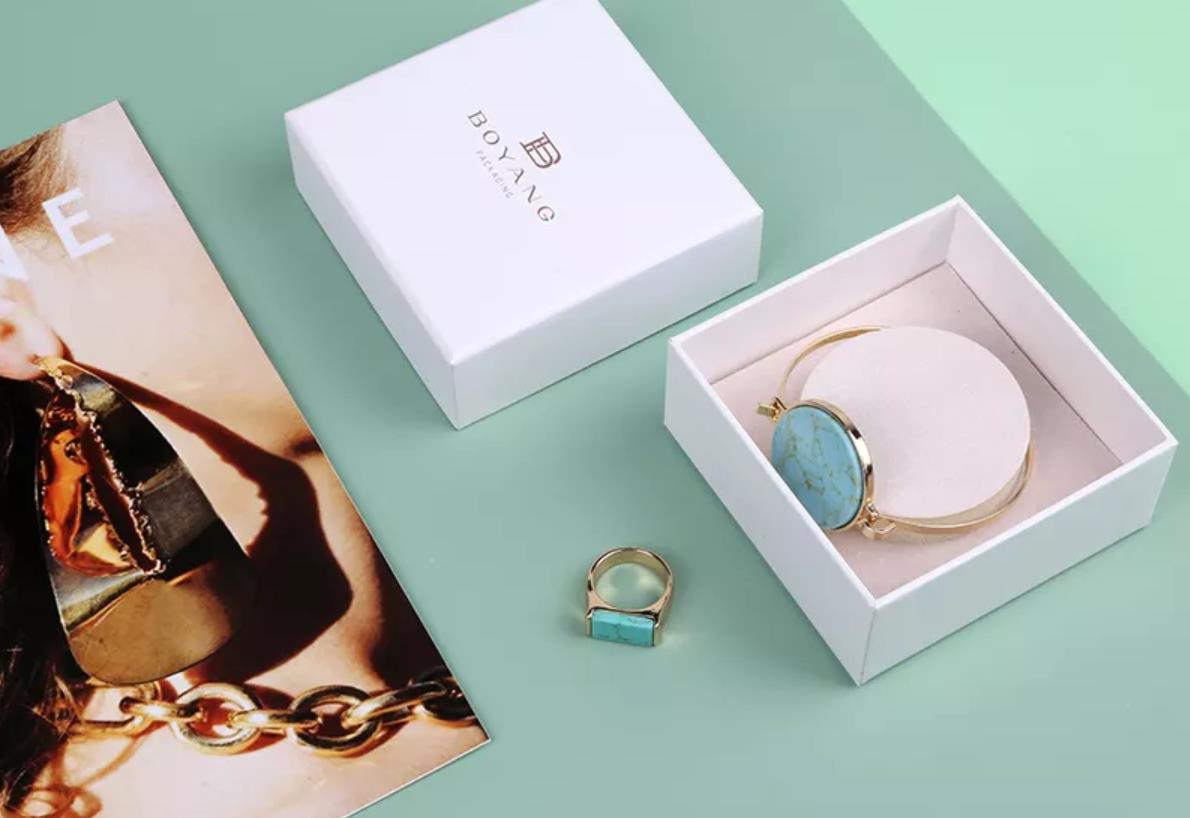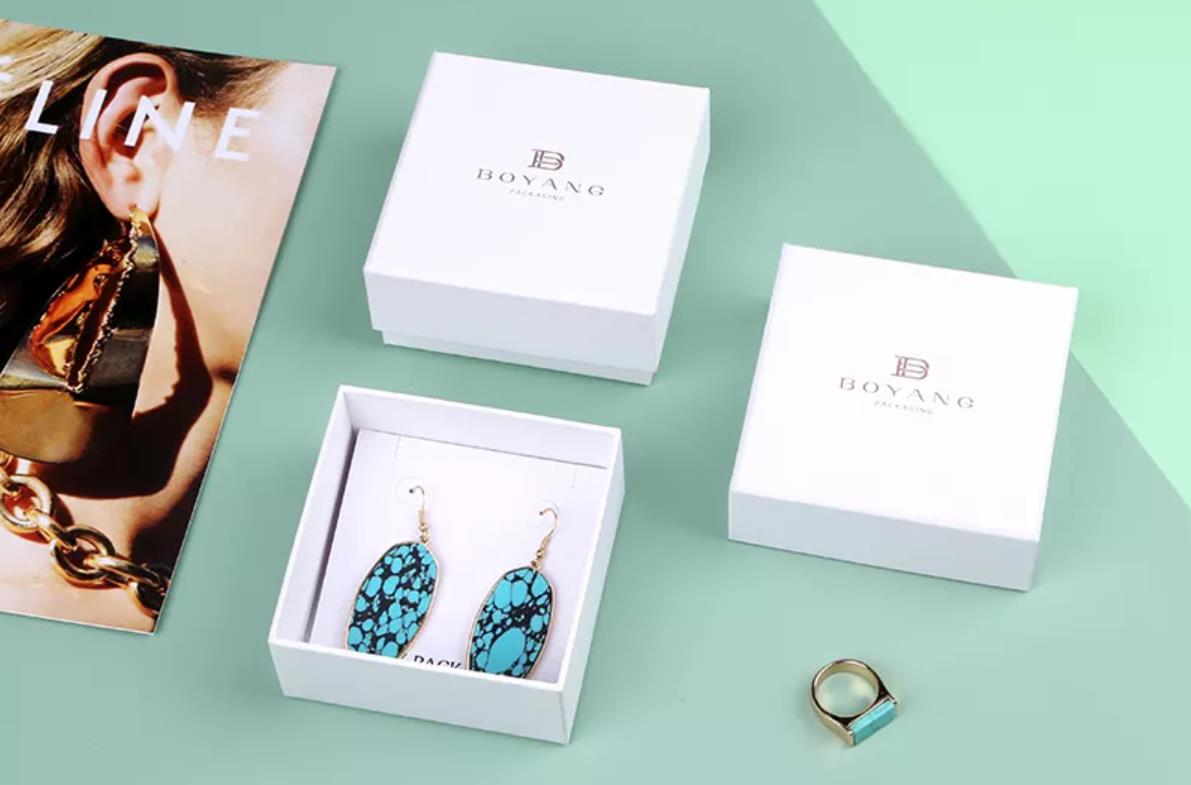You can share
- Share to Facebook
- Share to Google+
- Subscribe to our
- Share to Linkedin
- Share to Twitter

When consumers are attracted by the physical structure, shape, and color of the package, and get the product from the shelf, they generally first see the main information surface of the package, that is, the front of the package, and then follow the reading habits from left to right Turn to the right side, the back, so as to fully understand the product information. Customized jewelry packaging boxes can also follow this rule. Although we try to be as simple as possible when designing jewelry packaging boxes, we will also properly lay out some content on it, which requires consideration of the composition of the layout.
Packaging various elements that can generate attention, these elements can be divided into primary design elements and secondary design elements. By distinguishing the primary and secondary positions of basic design elements and secondary design elements, we can better determine the position distribution of each element on the packaging layout. Generally speaking, basic design elements can include elements required by marketers and regulatory agencies, or through the evaluation of key elements to determine the necessary elements, such as brand logo, brand name, product name, ingredient description, net weight, nutritional information, barcode, and expiration date, hazards, usage and dosage, instructions, etc. Secondary design elements include any supporting elements such as product description language or "storytelling" through graphics, photos, colors, etc. The size, position, and interrelationship of each element are determined by the basic layout and basic design principles, and the overall strategy of packaging design usually adopts a system that reflects the sense of hierarchy, that is, visual flow design. Successful information hierarchy design should make information easy to scan, and designed according to the visual flow, so that consumers focus on important parts first, and then view other parts in a logical order.

No matter what material is used to customize jewelry packaging boxes, there are always one or two pages used to convey important identification information such as product names and trademarks. This page is the main information page or the front of the package (PDP for short). The PDP constitutes a display area for key images in a package design - visually conveying the product's market strategy and brand strategy. In how to increase the sales volume of this kind of packaging product in the crowded retail environment, PDP plays a key role in it. A well-designed PDP can effectively convey marketing strategy and brand strategy; can clearly display product information; In the competition of similar products, the characteristics of this product are highlighted; it can make this product stand out on the shelf, and the color varieties and product differences are easy to distinguish.
To achieve a sense of hierarchy and clear communication of information, it is necessary to accurately locate each information element and arrange it effectively in accordance with the rules of visual language design. This is the visual process design. The so-called visual process refers to the movement process of vision in space, and in layman's terms, it is the process of the audience reading information. When people read information, they must look at one place at a time, what to look at first, and what to look at later. The line of sight is carried out in a swimming manner on the layout, which is the visual process. In general, visual process design is divided into three processes: visual capture, process perception, and impression retention.
Visual capture means mobilizing various design elements to catch consumers' attention within 3 seconds. It can be a product, or the scene where the product is used and the graphics associated with the product, or it can be the brand name or product name. The magnitude of visual tension leads to changes in the intensity of attention, and this change is realized through the rendering of colors and the use of all means such as exaggeration, contrast, repetition, and lightness relations, as well as various expressive techniques, techniques, and materials. The jewelry packaging design should not only enhance artistry to help visual capture but also cannot use aesthetics to replace information transmission.

Information communication arranges, organizes, and processes various information carriers according to the laws of visual movement. The level of content, the characteristics of the form of expression, and the rhythm of the process all need to be clarified. The graphical requirements of the information carrier are clear and identifiable traces, easy to recognize, reasonable order, regular rhythm changes, pleasing to the eye, outstanding personality characteristics, and easy to remember. The most active and motivating factor in visual process design should be a "line of sight inducing medium" that runs through the entire visual process. The direction of the design moves sequentially, from large to small, from primary to secondary, and connects the elements of the design in an orderly manner.
When consumers observe products, they usually pay attention to the front of the package first and then return to the front after browsing other information pages. Such a visual process requires every information surface to leave a deep impression on consumers, especially the main information surface. Therefore, generally, the trademark, product name, and product graphics are organically combined to form an "overall trademark" to deepen the impression. In design practice, differences in types and functions lead to differences in visual capacity, some of which focus on eye capture, while others focus on information transmission or impression retention, each with its own emphasis.
Commodity information is divided into primary and secondary according to product strategy and brand strategy. Different levels of information, it is arranged on each page of the packaging. The level of information displayed on each page is also different. Customized jewelry packaging design is to These different levels of information are arranged according to a certain visual flow, so as to guide consumers to read.